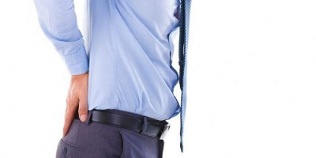Medical statistics claim that most men on our planet know first hand what prostatitis is. However, the disease is not always quickly detected and treated. If we talk about the age category of the disease, the symptoms of prostatitis can be diagnosed at the age of 18, but the long chronic course of the disease with inflammation of the gland (prostate) is characteristic of elderly patients.
What is prostatitis in men
The name of the disease comes from the Latin "prostatitis", which literally translates as prostate and inflammation. Prostatitis in men is a generalized name for inflammation of the prostate, whose complete picture of the causes and mechanisms of development is not fully understood. The symptoms of prostatitis are not difficult to recognize, but it should be borne in mind that in all patients the disease progresses according to an individual scenario, it can develop without special symptoms, imperceptibly turning into a chronic form.
How prostatitis manifests in men

Doctors divide the disease into different forms according to the patient's symptoms and clinical picture. It can be acute, chronic, bacterial, calculous, congestive, infectious, purulent, and depending on this, prostatitis manifests itself in the form of various symptoms.
It can be diagnosed by sudden attacks of severe pain in the scrotum, difficulty urinating, poor potency. In the presence of the disease, the properties of sperm and the quality of ejaculation deteriorate. If at least one of these symptoms occurs, you should see a doctor.
Signs of prostatitis
Symptoms can be diagnosed by a general urine and blood test. Research will help identify the culprit for the onset of the disease, and these may be some infections: for example, trichomoniasis, gardnerellosis, chlamydia, and even gonorrhea. Bacteria enter the site of localization through blood vessels from the bladder or rectum and cause health problems. The non-bacterial form of the disease is not detected by tests, however, it is not an indicator of the absence of bacteria. The consequences of both forms can be dire.
Signs of prostatitis in men are divided into two phases - latent and active. The first phase has fewer symptoms, but already indicates the presence of the disease. The latent phase can last for years and is characterized by discomfort in the scrotum, sometimes in the head of the penis, the anus. Men generally attribute this to simple fatigue. When the pain becomes more intense and the emptying of the bladder starts to create big problems, it means that the inflammation is progressing and the disease has passed into the active phase.
First characters

The disease has several stages of development. It may initially cause a constant urge to urinate, and pain and burning may be present in the toilet during this procedure. Pain in the lower back, pelvic area and groin.
When you discover the first signs of prostatitis in men, you should go for a consultation with an andrologist or urologist, so as not to complicate the situation and maintain men's health.
Symptoms of prostatitis
The disease can manifest itself in three main symptoms:
- frequent need to go to the toilet;
- bol;
- weak or absent erection.
External symptoms of prostatitis include urinary problems. Urine pressure is low, bladder emptying occurs with pain, and there may be a complete absence of urine outflow (in medicine this phenomenon is called ischuria). This is due to compression of the urethra by an inflamed gland. If inflammation can develop, it affects the urethra, rectum, genitourinary system or provokes the development of tumors. After 30 years, all men must be examined annually by a specialist.
Inflammation of the prostate causes completely different symptoms of prostatitis. The symptoms of acute prostatitis can be severe and cause a very strong general feeling of weakness, with chronic prostatitis the symptoms are usually milder. Not every sick person necessarily has all the characteristic signs of the disease, the severity of the symptoms can vary depending on the condition of the body and other factors.
In order not to get sick, a person should avoid:
- hypothermia;
- unbalanced diet (excluding fried foods, canned foods, alcohol);
- sedentary lifestyle;
- bad habits;
- irregular sexual activity,
- Frequent sexual erections without ejaculation.
Pain

The main symptom related to local symptoms is pain. By their nature, they are hurt, pulled, shot, or pressed. According to the pain sensations in prostatitis in men, they are insignificant or strong and are always concentrated in the perineum, in the area of the anus or sacrum.
The cause of pain symptoms is prostate irritation in the products of the inflammatory process. What other symptoms are there in prostatitis?
Featured
Pain may be accompanied by discharge. Discharges of varying degrees of transparency, different densities, and colors often occur from the outer opening of the urethra, for example, thick milky white at the end of urination or defecation. In the chronic form, the patient may experience spermatorrhea - discharge of sperm in small portions during bowel movements and muscle tension in the perineum.
Discharge from prostatitis in men may be purulent greenish. They are also noticed with a slow course of the disease, when they consist of damaged epithelium, mucus, leukocytes. This type of discharge, the presence of symptoms of pain, cold and high body temperature indicate the transition of the disease into an acute form. If a sick man does not go to the urologist, the disease can cause serious pathologies: sclerosis of the prostate, infertility.
Symptoms of chronic prostatitis
The first symptoms of chronic prostatitis can be considered the appearance of discomfort, pain in the lower abdomen, sometimes in the lower back and hip. Sexual dysfunction progresses within a few days. At the end of intercourse, a pulling pain may appear at the top of the penis, which disappears on its own in a few minutes. Finally, each urination begins to be accompanied by a feeling of burning and pain, which will gradually increase.
Symptoms of acute prostatitis in men

In this form the disease is divided into catarrhal, follicular, purulent. In the first case, the symptoms of acute prostatitis in men are characterized by problems with urination, in the second they are supplemented by pain in the scrotum and fever. In the third case, the disease manifests itself in the form of a gland abscess and the strongest manifestation of all the above symptoms.
Treatment of prostatitis in men
The treatment process includes measures to remove inflammation and congestion in the prostate. Success depends on getting rid of them quickly. Treatment of prostatitis in men begins with a diagnosis, determining the root of the problem. The doctor will take a swab from the urethra and, if the result is positive, prescribe antibiotic therapy. The duration of treatment will depend on the degree of damage to the body and how effectively the existing symptoms disappear.
Young people get sick, in most cases, from elemental hypothermia. As a result, the acute form of the disease progresses, in order to fight against which antibiotic therapy is carried out. If the prostatitis is caused by stress, the root of the disease is treated by a neurologist. In such cases, the doctor prescribes relaxing massages, electrophoresis and taking vitamins. Without removing the cause of the disease it will not be possible to get rid of it.
When symptoms of prostatitis and prostate adenoma appear, the following treatment mechanism is applied:
- Antibiotics are an important component in the treatment of infectious diseases. The composition of drugs should have a wide range of action.
- Alpha-blockers can be prescribed to improve blood circulation, for quick recovery of the prostate.
- To restore the hormonal system, your doctor may recommend taking hormonal medications.
- Muscle relaxants prescribed by an expert will reduce tension in the striated muscles of the gland.
Herbal remedies are often used in the complex treatment of prostatitis.
If the above methods do not bring the required results, surgery is used. Sometimes this may be the only possible treatment.
Acute and chronic prostatitis syndromes in men can be treated with laser therapy. This method treats acine (functional units of the gland) and increases the patient’s defenses. Chronic prostatitis can be treated with laser and medication. With a severe form of the disease without particularly pronounced signs, the laser helps the patient to quickly improve his condition: after two or three procedures the pain disappears, the potency is completely restored.
























